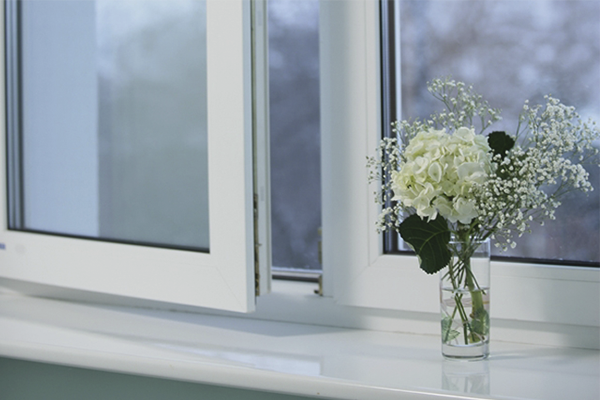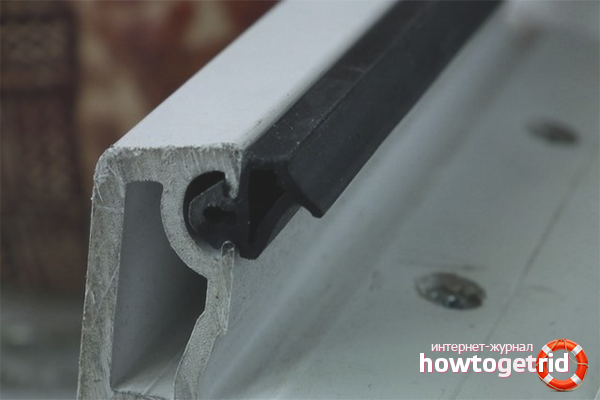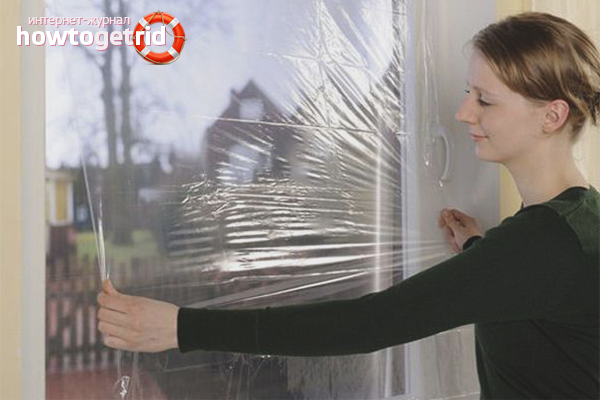The content of the article
Plastic windows quickly gained their popularity due to ease of installation and high thermal and sound insulation properties. Unlike simple windows, modern glass packs have high durability, less toxicity and a long service life.
But even these kinds of windows have problems over time. They begin to let the cold air out of the street. Why is this happening, and how to deal with it is described in detail in this article.
Causes of drafts in plastic windows
To solve the problems associated with the loss of heat, you first need to determine the causes leading to the draft. There are three main factors of occurrence in plastic windows of places through which heat leaves a room.
- The destruction of the insulating layer. If during the installation of the glass unit the heat insulator was poorly protected from direct sunlight, then over time it will collapse. As a result, through holes are formed, into which cold air from the street gets.
- Incorrect assembly or installation design. From poor-quality installation with time glass pack warped. There are cracks between the frame and the window opening. Warm air begins to leave the room. The problem can also be the use of low-quality fittings.
- Untimely replacement of seals. The glass unit is constantly experiencing large temperature differences. In summer, it gets very hot under the rays of the sun, and in the winter time it cools. As a result, rubber seals deteriorate, losing elasticity. Late replacement leads to constant drafts.
Determination of the place of penetration of a draft
In the absence of such a device, you can check it by folk methods. For this you need to bring a match or a candle with fire to the intended places. If the fire begins to hesitate, it is a sign of a draft. Determine the place of air penetration will work, bringing his hand. You will feel a slight chill penetrate the room.
Thus, it is necessary to check the places around the frame, moving parts of the window (handle, door) and under the window sill. These are the most problematic areas.
Adjustment of the clamping lock of a plastic door
If you feel a draft passing through the gap between the frame and the door, this means that you need to adjust the clamping mechanism. He is responsible for pressing force. Over time, the mechanism becomes loose and needs to be twisted. This process is simple and takes several minutes.
Required tools
- flat or figure screwdriver;
- set of hex keys.
Working process
On the side of the door is a presser lock with knobs. Take the key or screwdriver, start tightening the screws. Turning counterclockwise, you tighten the mechanism. Try not to overtighten, otherwise the door will not close well.Locate and adjust all screws. They should be tightened evenly.
After adjustment, re-check the cracks for drafts. If you did everything right, they will disappear. But sometimes the problem can not be solved only by adjusting the clamping mechanism. The cause is spoiled seals that need to be replaced.
Replacing plastic door seals
The seals are in special slots running along the inner perimeter of the window. They consist of rubber or silicone. Over time, this material dries out and loses its elasticity. As a result, window insulation deteriorates.
To solve the problem you need to replace all the old seals. The process is time consuming and requires the use of various tools. For work you may need a partner. It will help evenly distribute the seals around the perimeter of the window.
Required tools
- screwdriver or knife;
- degreasing agent;
- emery paper or file;
- special glue for seals.
Working process
Remove the old gasket with a knife or screwdriver.Clean the groove of rubber and glue residue with a file or sandpaper. After thorough cleaning, degrease the groove with a special liquid. You can use medical alcohol if there is no special solution. Apply glue gently to the surface of the groove.
Evenly distribute the seal around the perimeter of the window. Do not overtighten or squeeze the seal. Otherwise, during operation, it may break or not be pressed tightly to the frame.
After replacing the seals, drafts from the window will stop. If this did not happen, then during the installation errors were made. Or re-adjust the clamping mechanism.
Warming slopes and window sills
Most often, a draft penetrates through the cracks in the window sill and slopes. The reason for the formation of large slit plots around the perimeter of the window is poor-quality installation or, which has become unusable, insulation. To get rid of this common problem, you need to dismantle the decorative panels of the slopes and window sill, and then heat them up with quality. For this there are several common types of materials.
Materials
- mineral wool;
- polyurethane foam;
- warm mixtures;
- Styrofoam;
- penoplex.
When choosing insulation, it is necessary to take into account its characteristics. For example, foam is often used, but it is a short-lived material. Under the action of sunlight and temperature drops, it gradually collapses. The remaining insulants are durable, so it is recommended to insulate plastic windows with just such materials. Take care also in the selection of tools.
Required tools
- electric drill with a nozzle for mixing the solution;
- knife and scissors;
- stapler and staples;
- putty knife;
- hammer;
- level;
- ruler;
- corner of
Working process
First remove the slopes and window sill. Carefully study the condition of the old window insulation system. Remove the previous insulation material (if present). Thoroughly clean surfaces from dirt and dust.
After the preparatory operations, make a plaster mortar to level the damaged surfaces of the slopes and window sill. After the plaster layer hardens, start the installation of the selected insulation.
Well plug the slit insulator around the perimeter of the window.Cut out foam (or other material) slabs with a width equal to the width of the sill and slopes and glue them to the plastered surface. Rub joints and corners with a putty.
For finishing use plaster or moisture-proof plasterboard sheets. Apply to the surface of the window sill and slopes a special decorative putty. At the end you can paint in the appropriate color, but this is optional.
Pasting windows with heat-saving film
This is another way to insulate a plastic window. Special heat-saving film helps reduce heat loss in the room. It has a double effect: heat saving and UV protection. As a result, it is possible to get rid of glass fogging. The film is glued to the inside of the window.
Required tools
- Double-sided tape;
- hair dryer;
- sharp knife;
- scissors.
Working process
Tape the perimeter of the box with double-sided tape and remove the protective, top film. Cut a piece of heat-saving film to the size of the window. Start gently glue it on the tape. Then wipe the window perimeter with a cloth so that air bubbles disappear between the tape and the film.
Take a household hair dryer and start heating the film. This should be done only in the corners, and not over the entire glass area. It is enough to make a few laps to hot air sat down the film on the glass. After completing the work, cut off the extra pieces of film.
Now you know how to independently carry out the insulation of plastic windows. It is easy if you approach the process carefully. The result of labor will not take long and will surely manifest itself in the form of warmth and comfort in the room.
Video: how to insulate a window or balcony













To send